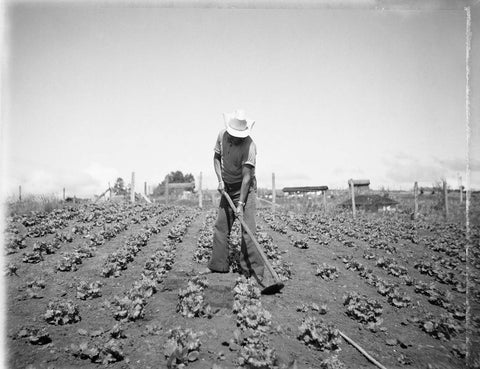
‘There are things that I do not like in this world. I could be ironic, but I am very careful not to be.’ Guido Guidi
Unlike many other photographers, Guido Guidi has no desire to be a dominant figure. He does not seek to control a space; he does not impose himself on what he photographs. He takes part in it, identifies with it.
As an apostle of the ‘cleaning of the frame’, this erudite atheist employs the vocabulary of religion: ‘In the moment that I take a photograph of something, I feel that I am that thing... It is as if I am praying.’ For him, bringing something to light, contemplating, begins with cleaning and avoiding clichés rather than composing. He hesitates to speak about ‘landscape’ because the term is overused; here, we will speak instead of ‘views’ (like the number of views on a roll of film). His photographs, which he sometimes describes as ‘ugly’, are the profound expression of his territorial origins, in what was an agricultural area on the edge of a suburb now traversed by a highway.

Born in 1941 near the northern Italian city of Cesena, where he still lives, Guidi is a man of many paradoxes. After various early experiments with black-and-white photography at the end of the 1960s, he began using colour negatives in a large-format camera, despite the apparent banality of the views, which would seem to call for rapid shots. He is attached to small prints, quite often contacts, although his negatives would permit large formats.
He does not maintain a distance as his photographic technique might imply; rather, he exercises his control over the everyday without trying to separate himself from it. And he travels very little, but when he does, it is above all in order to find a kinship between cities, between the outlying areas in the process of industrialisation or abandonment. Indeed, he turns his back on the city-centre tourist sites which have become ‘bijou residences’ of little interest to him. What he looks at is the everyday life around him, but one which is being transformed, regardless of where he is.
Guidi, who was trained as an architect, teaches in Venice and Ravenna, but his method is based on questioning rather than explaining. His concern with territorial transformations led him to participate in 1989 in the creation of the photography project ‘Linea di Confine’ (Boundary Line), which focuses on the observation of what is commonly known as ‘landscape’ and has given rise to many exchanges with artists he feels close to.
In their transience, Guidi’s views show what is commonplace, sites not yet completed or in ruins, neglected spaces, where the human beings who sometimes appear in the series either pose conspicuously within a well-defined frame or pass by accidentally in the distance. Guidi uses the expression ‘momentary decision’ to describe the way he shoots, with no pretence of decisiveness, a relationship to time which is just the opposite of the ‘guillotine blade’ of photographers intent on capturing the rapid instant. Guidi’s eye is looking for something pure; ultimately, he does not really know whether this is documentary or fiction but it is anchored in the real.

What counts is the sequence: Guidi builds phrases, through a mental process which allows him to render his subject visible. But he does not explain; he traces. Lined up one after the other, his photographs constitute a ‘tracing’ (in the sense of the physical act). He likes holding a pencil; the walls of his house are covered with words which are traced, or even drawn by hand, then covered with paper in order to start over again. The prints often bear captions written very visibly on the white border of the image. A print is not sacred; it is one part of a whole, an archive, a collection of views which he has patiently been bringing together for the past forty years in order to make his world exist.
What interests him is the very brief moment when the view becomes an image; for Guidi, this is where beauty lies, when the infinite possibilities offered by peri-urban spaces take form and become visible. This is a new form of radicalism in the history of the medium, a radicalism of involvement and solidarity with what he photographs, as if it were the very expression of his genes. Indeed, Pasolini and Antonioni had already learnt this from the freedom of post-war Neorealism, regularly filming in these undefined spaces.
This is, in sum, the expression of Guidi’s freedom: conscientiously bringing to light a shifting reality which we do not wish to see, where we think there is nothing to see. Making it stand the test of time. Without irony.
Extracted from Veramente (2014) by Guido Guidi






